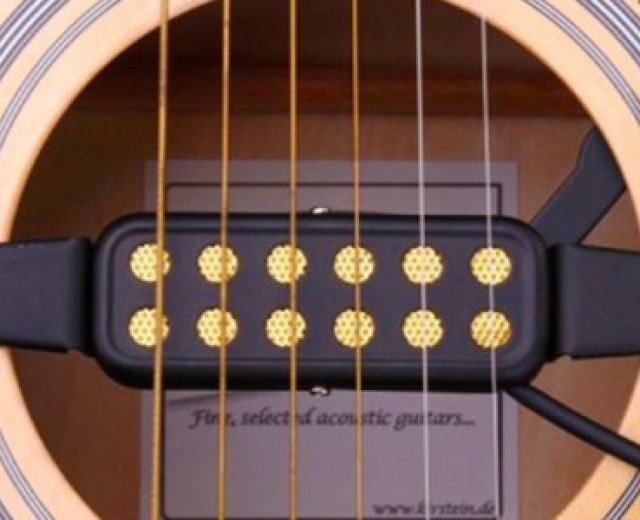How to amplify an acoustic guitar
There are
may ways to amplify an acoustic guitar, the
most frequently used are:
Piezoelectric transducer
Some crystals exhibit piezoelectric properties, that is they can generate a
small electric voltage when you subject them to mechanical stress. The most
common piezoelectric
pickup is made of a small block of crystal or ceramic material with a metal or
plastic cover, using its physical properties to capture the vibrations of the
stringed instrument and transduce them into sound. Very often it is positioned
under the saddle of the bridge (under-saddle pick up), an optimal place to
capture most of the vibrations. It can also be placed on the soundboard with
adhesive materials or screws, or under the bridge. The most common piezoelectric pickups are active, that
is, are connected to a preamplifier usually running on a 9V battery that can be
equipped with volume and EQ controls. This preamplifier, sometimes featuring also
a digital tuner, can be hosted in an opening on a side of the guitar, or inside
the soundhole.

Magnetic Pick up
Just like a pick up
for the electric guitar, it is positioned on the soundhole, so that no
irreversible modifications of any kind are made to the instrument. In the past,
this solution did not allow to capture all the nuances of the tone of the
guitar, as the soundbox of the instrument influenced marginally the global
sound. Today, thanks to more sophisticated electronics and hybrid systems that
can handle more pickups simultaneously, the performances of magnetic pick up reached
levels that gained the appreciation of professionals in the most diverse
musical genres, thanks to the definition and the power of the tone.

Using microphones to amplify the sound of the acoustic guitar is the method that offers the best performances, so it is the preferred solution by professional musicians. Of course the final results depend a great deal on the type of microphone used, on its positioning, on the skills of the sound technician and on those of the musician itself, who must be able to handle correctly the distance between the guitar and the microphone. If the guitar player must of course pay attention not to hit the microphone, he or she can use creatively the guitar-microphone distance to create dynamic, volume and feedback effects, to reach higher levels of expression.
